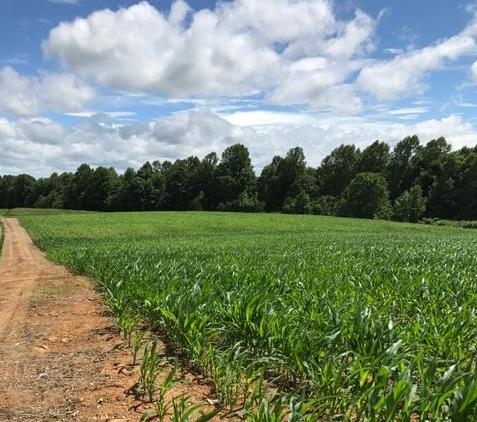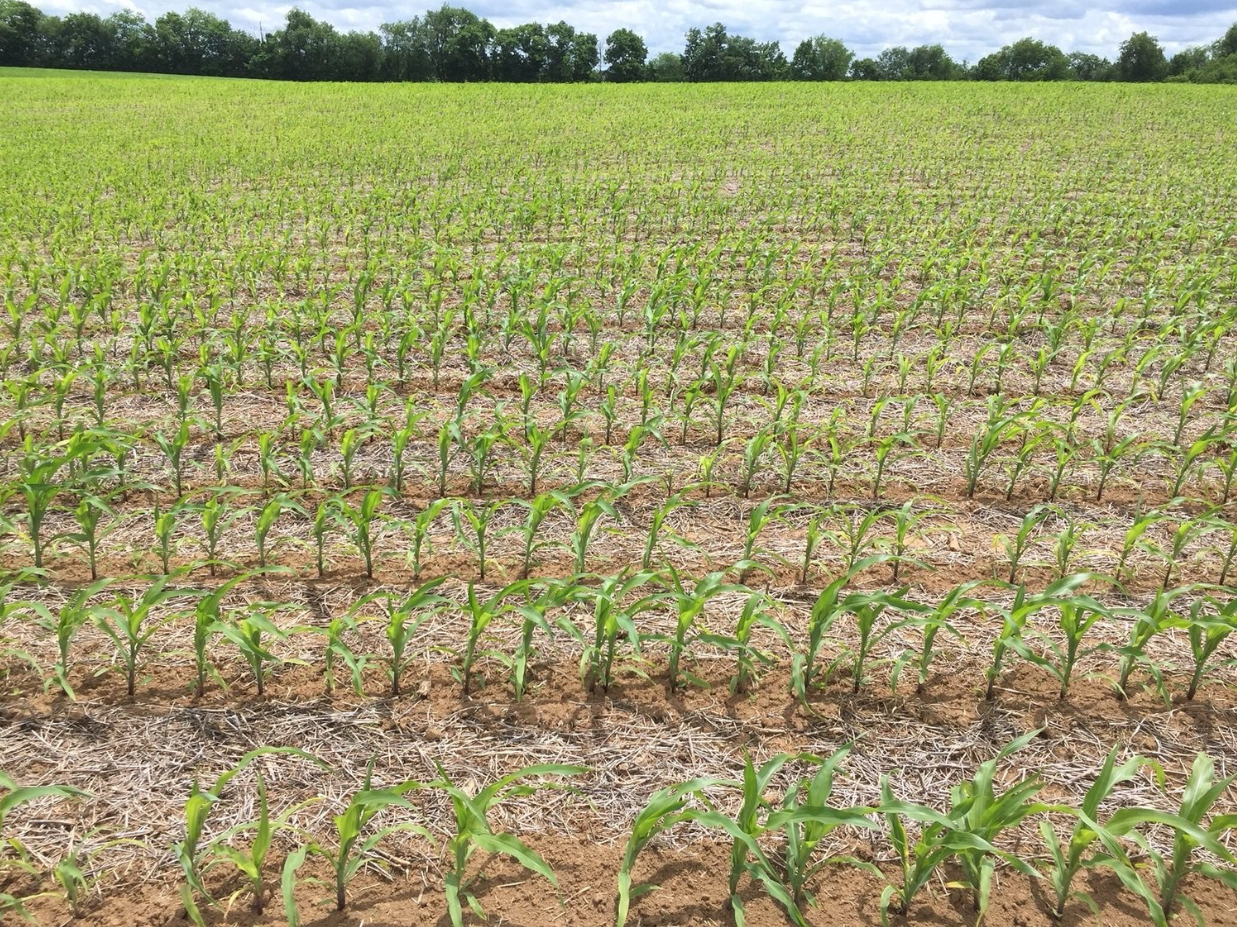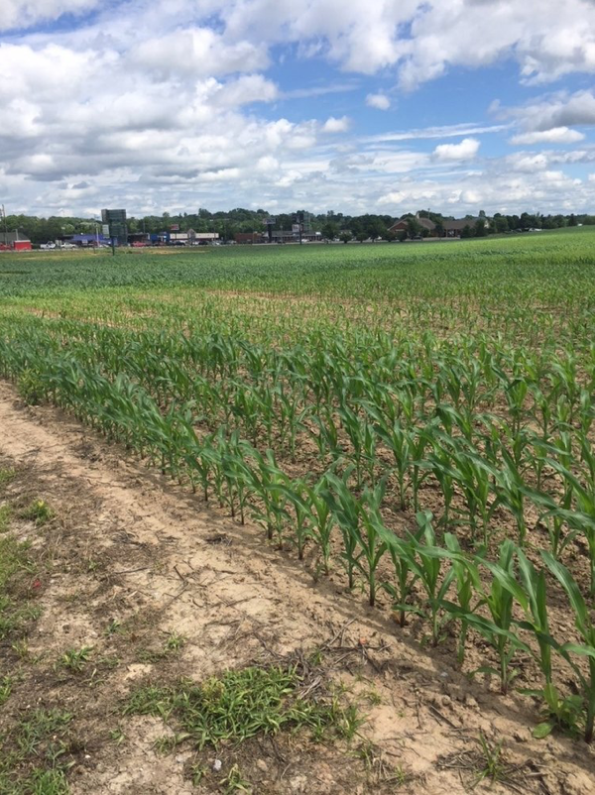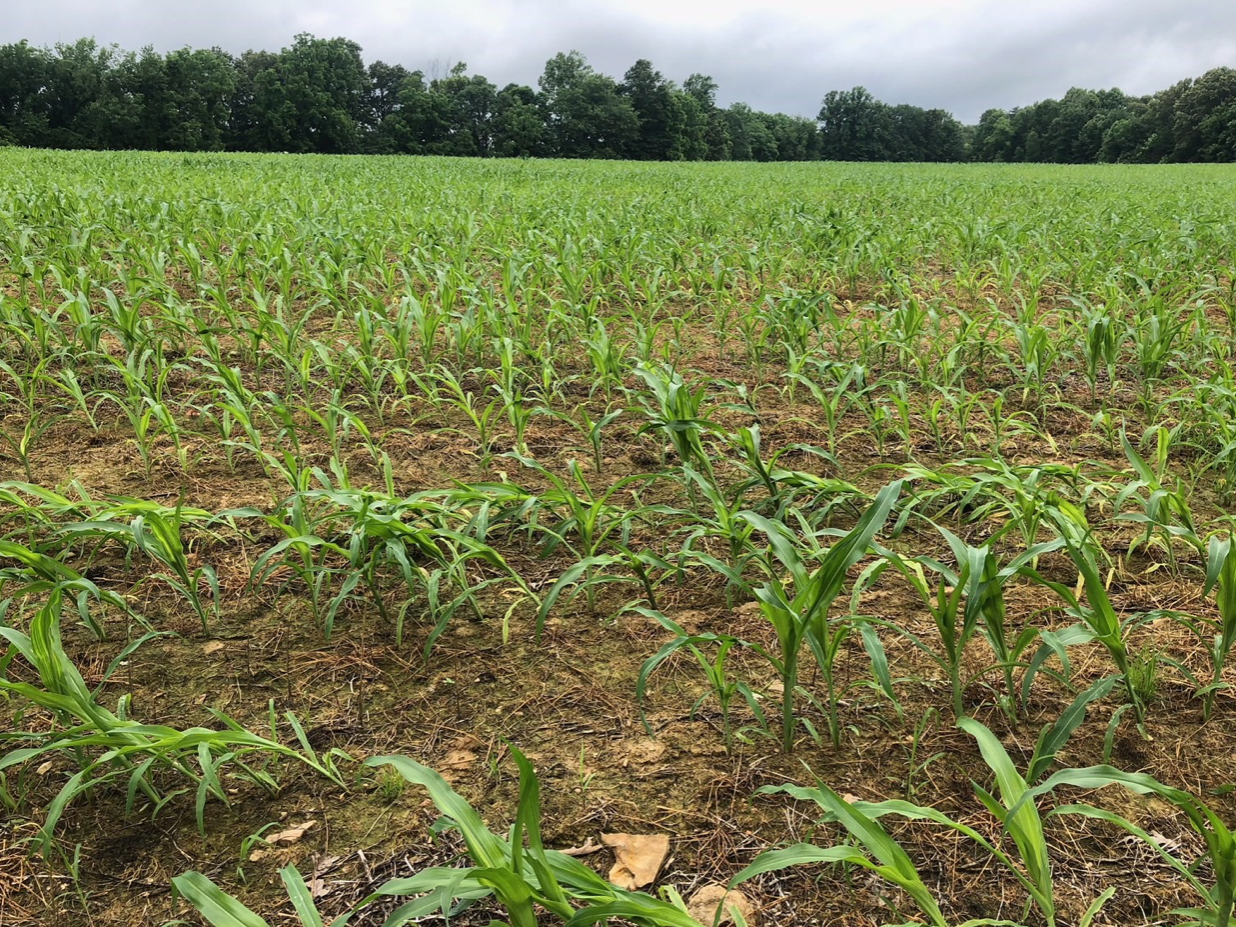Corn across Kentucky has had a difficult week. Corn looks erratic in many fields, especially in the eastern half of the Commonwealth, says Chad Lee. Much of the crop is finally large enough to reveal planting errors, restricted roots and dry spots in fields. All of those problems display as nutrient deficiencies. Storm system Alberto dropped over 50,000 gallons of water per acre in many fields in a short period. Those 200 tons of water combined with high winds to flatten corn in many fields. In this article, we will try to tackle each of these subjects.
Sidewall Compaction
Sidewall compaction causes nutrient deficiencies and erratic appearances to fields, says the University of Kentucky agronomist (see photo below). Roots restricted to the seed furrow have limited access to nutrients and the plants that are at about V5 growth stage will display nutrient deficiencies.
Timely rain events will soften the sidewall and help roots escape the compacted layer. Dig these plants and look for evidence of roots escaping the seed furrow. If roots are escaping, the corn has a chance to make a good yield. If the roots are trapped, yields will be poor.

Shallow Planting
Corn seeds planted less than one-inch deep can result in nutrient deficiencies, especially if soils are dry (see photo below). Just like with sidewall compaction, corn at about V4 or V5 growth stage are big enough to display these nutrient deficiencies.
In these cases, a little rain will encourage root growth, allowing the roots to find the nutrients and yield extremely well. These plants are at higher risk to lodging later in the season, but high yields should be expected if the season is favorable.

Dry Soils
Dry areas can lead to temporary nutrient deficiency (see photo below). Some areas of Kentucky were actually short on moisture before Alberto hit. The previous week was above average temperatures and below average rainfall (USDA NASS Crop Progress).
Since many soils undulate and have variable rooting depths, the soils across the field can be at different levels of moisture. The dry areas will have plants displaying nutrient deficiencies even when the soils have adequate or high fertility levels. The variability of soil moistures across a field can lead to the erratic appearance of corn in a field. Alberto removed the dry areas but brought other problems.

Flattened Corn
Alberto flattened corn in fields across Kentucky. Most of the corn was between about V4 and V7 growth stages. If the stems are bent but not broken the corn plants will grow upright and good yields are still possible.
For these fields, the best thing to do is to stay away from them for a few days. Corn flattened from the storm system Alberto should recover if the stems are not broken (see photo below).

Final Thoughts
While much of the young corn looks erratic across Kentucky, much of the crop still has good yield potential. The erratic weather this spring and planting problems in certain fields combined to cause these erratic symptoms.
Many farmers are motivated to apply foliar products to the field. Many of these products could improve the appearance of the field, but they may not improve the yield. For anyone trying a foliar product, please keep a couple passes out of the application to serve as a check. These checks in the middle of the field can help determine if any of those products improved yield.
If we receive adequate and timely moisture the remainder of the growing season, yields should be excellent. However, if the weather this spring were a predictor of the weather coming this summer, we could be in for a bumpy ride. If you have questions about your fields, please contact your county extension office.






Post a comment
Report Abusive Comment